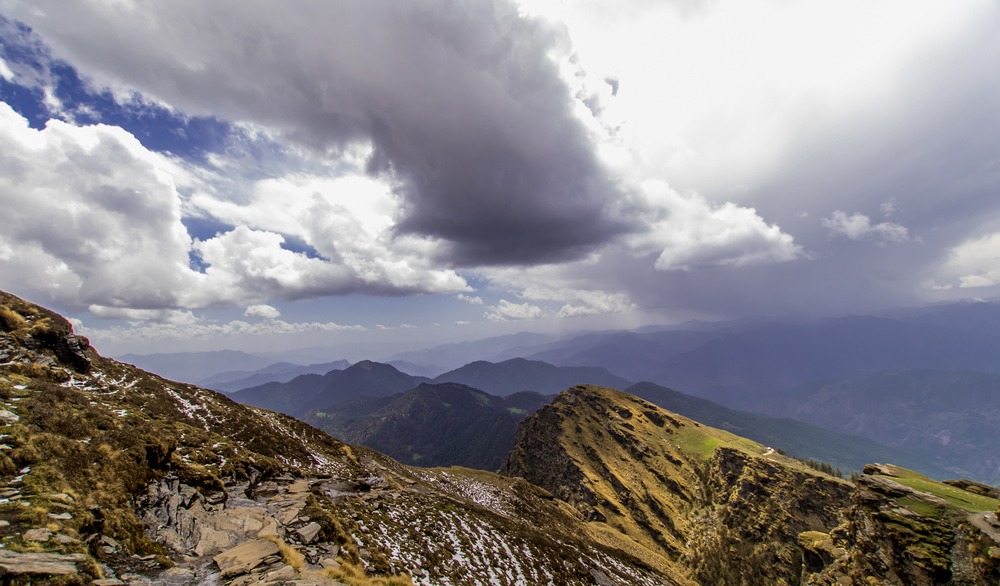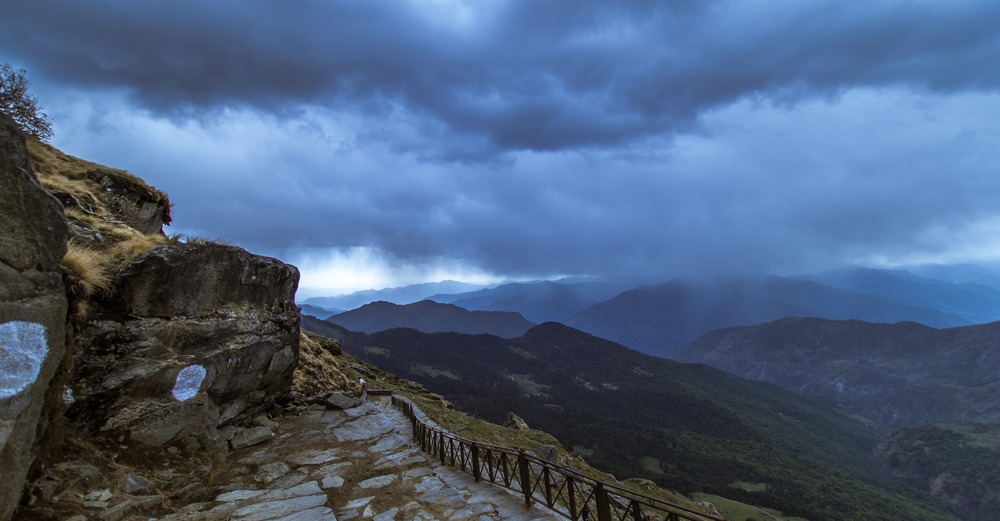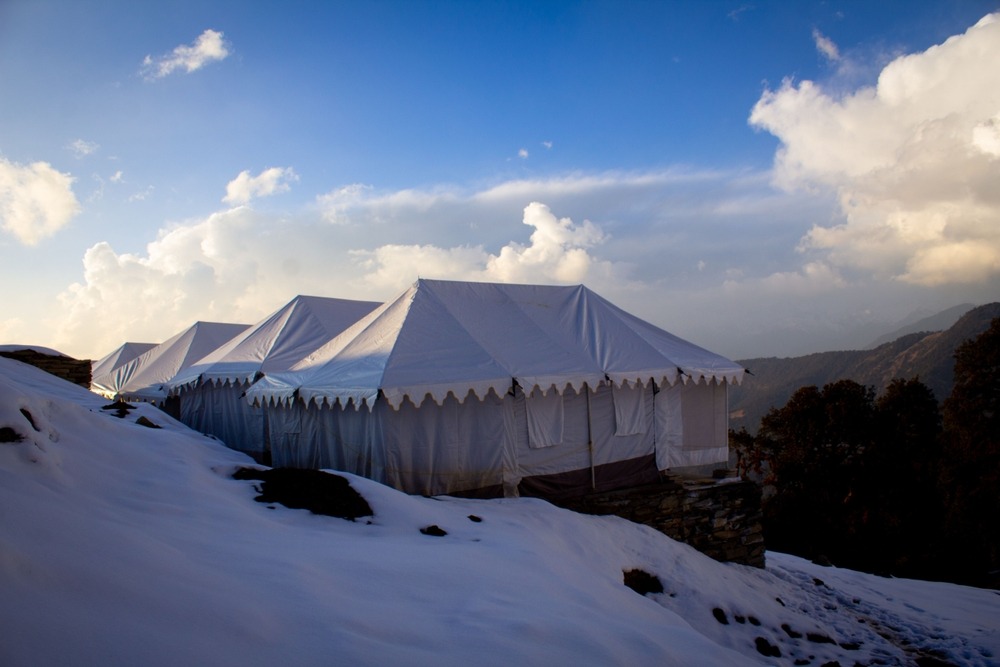If you’ve ever dreamed of trekking through the Himalayas, experiencing serenity amidst snow-capped peaks, and standing at the summit of a revered sacred spot, the Tungnath Chandrashila trek should be at the top of your list. I’m here to share everything I’ve learned about this amazing adventure, from the logistics of getting there to what you’ll need to know for a successful and memorable trek. Whether you’re an experienced trekker or someone who loves to embrace a good challenge, this trek offers both breathtaking beauty and spiritual significance.
Why Tungnath and Chandrashila? A Perfect Blend of Nature and Spirituality

The Tungnath Chandrashila trek is an experience like no other. Nestled in the Garhwal region of Uttarakhand, this trek takes you to two of the most significant landmarks in the Indian Himalayas: the Tungnath Temple, the highest Shiva temple in the world, and the Chandrashila Peak, which offers one of the best panoramic views of the Himalayas. What I loved about this trek is how it blends both spirituality and adventure.
Tungnath Temple, situated at a staggering height of 3,680 meters (12,073 feet), isn’t just a physical destination — it’s a spiritual one. As I approached this ancient 9th-century temple, I could feel a sense of calm enveloping me, heightened by the surrounding natural beauty. The simple stone structure and the sound of chanting from the small shrine made me appreciate the connection between nature and divinity.
The climb to Chandrashila Peak from Tungnath is a short but exhilarating final stretch that rewards you with a 360-degree view of the snow-capped peaks. Standing at 4,000 meters (13,123 feet), with Nanda Devi, Trishul, and Chaukhamba peeking above the horizon, it’s hard not to feel like you’re on top of the world. The trek is challenging, but that’s what makes it so rewarding.
When Is the Best Time to Trek to Tungnath and Chandrashila?
I was lucky enough to experience the trek in the summer, but you might be wondering when the best time to go really is. It all depends on the experience you’re looking for!
Summer (April to June): The Ideal Trekking Season
If you’re like me and want to hike in perfect conditions, summer is the best time for the Tungnath Chandrashila trek. The weather during this season is incredibly pleasant — not too hot and not too cold. Temperatures range from 12°C to 18°C during the day, making it ideal for trekking. The skies are clear, offering unhindered views of the surrounding mountains, and the trails are dry and easier to navigate.
Moreover, summer brings the green season to the Himalayas. The forested paths are lush with vibrant rhododendron and oak trees, and the air is fragrant with the scent of wildflowers. It’s a perfect time for nature lovers like me, who want to experience the beauty of the mountains in their full glory. But do note, since this is peak trekking season, the trail can get crowded during weekends, so I recommend booking your accommodations ahead of time.
Autumn (October to November): A Hidden Gem
If you’re looking for a quieter, more peaceful trekking experience, autumn might just be your perfect time to go. After the summer crowds have thinned and the rains have passed, the skies are clearer than ever. With daytime temperatures between 10°C to 18°C, and cool, dry nights, the weather during autumn is simply stunning. The bright blue skies and the golden hues of the fall landscape add to the magic of this trek. Plus, fewer people means a much more peaceful experience, where you can immerse yourself in the beauty of nature without interruption.
Monsoon (July to September): Avoid If You’re a Novice Trekker
While the monsoon brings lush greenery, it also makes trekking quite risky. The trails become slippery, and the heavy rain often leads to landslides. The visibility can also be poor, meaning you might miss out on the incredible views that this trek is known for. I’d highly recommend avoiding the trek during this period unless you’re an experienced hiker who’s prepared to navigate slippery paths and challenging conditions.
Winter (December to March): For the Bold and Adventurous
Winter in the Himalayas is both magical and challenging. While snow-covered peaks and icy landscapes make the trek visually stunning, the cold can be brutal, especially at higher altitudes. Temperatures drop below freezing, and you need to carry winter-specific gear to stay warm and safe. However, if you love solitude and don’t mind a bit of a challenge, winter trekking is an unforgettable experience. I’ve heard from others that the views during winter are mesmerizing, and the peacefulness of trekking through snow-covered trails is worth the effort. But be prepared for tough conditions and plan accordingly. If you’re looking for a trusted company for your Tungnath Chandrashila trek, I recommend The Searching Souls. Their expert guides and top-notch support ensure a smooth, unforgettable experience in the heart of the Himalayas.
How to Reach Tungnath and Chandrashila: Getting to the Base of the Trek

The first step in reaching Tungnath and Chandrashila is making your way to Dehradun, a city that serves as the gateway to the Garhwal region. I took a train from Delhi to Dehradun, which was both convenient and scenic, with views of the countryside unfolding as we got closer to the hills.
From Dehradun, you can either take a shared cab or private taxi to Chopta, the starting point of the trek. The drive takes around 7-8 hours and takes you through winding mountain roads that pass through towns like Rishikesh and Rudraprayag. The journey itself is beautiful, with stunning views of the river and forests, but the roads can be narrow and winding, so be prepared for a long ride.
Once you reach Chopta, you’ll find basic accommodations like guesthouses and homestays where you can rest and acclimatize before you begin the trek. I personally recommend spending at least a night here, to get used to the altitude and prepare for the journey ahead.
What to Pack: Essentials for a Successful Trek
When I first planned my trek, I was a bit unsure about what to pack. Over time, I learned that a well-packed bag is essential to having a smooth, comfortable trek.
Clothing
- Thermals and Layers: At high altitudes, temperatures can drop unexpectedly. I packed thermal tops and bottoms for warmth, along with quick-dry trekking pants for the day.
- Rain Gear: Even if you’re trekking in summer, a sudden shower can catch you off guard. I made sure to pack a waterproof jacket and rain poncho.
- Hat and Gloves: A sun hat was essential to shield me from the sun, while warm gloves were crucial when it got chilly at higher altitudes.
Footwear
The right trekking boots are a must. I wore boots that provided good ankle support and had waterproof qualities since the paths can get muddy or slippery. I also carried gaiters to prevent debris from getting into my boots, especially during the snow season.
Other Essentials
- Backpack: A daypack (around 30-40 liters) is ideal for carrying the essentials like water, snacks, a camera, and a first aid kit.
- Water Bottle: Staying hydrated is key, and I carried a reusable water bottle to refill along the way.
- Sunglasses and Sunscreen: The sun in the mountains can be intense, so I made sure to carry sunglasses and sunscreen to protect myself from harmful UV rays.
Fitness Level: Preparing Physically for the Trek
This trek, while not the most difficult, does require a moderate level of fitness. The ascend to Tungnath and the final stretch to Chandrashila Peak can be taxing, especially at higher altitudes. I recommend incorporating cardiovascular exercise like walking or jogging, and practicing hiking or trekking with a heavy backpack before you go. You don’t have to be an elite athlete, but being in good shape will certainly make the journey more enjoyable.
Additionally, acclimatization is key when trekking at higher altitudes. Spend time adjusting to the elevation, especially at Chopta, before starting the trek.
Conclusion: The Journey of a Lifetime
The Tungnath Chandrashila trek is more than just a hike; it’s an immersive experience that combines natural beauty, spiritual depth, and personal challenge. Whether you are seeking a peaceful getaway from the hustle of everyday life, or hoping to conquer a difficult yet rewarding trek, Tungnath and Chandrashila offer something for everyone. The journey to Chandrashila Peak, standing amidst the snow-covered peaks, and reflecting at the Tungnath Temple, makes this trek a once-in-a-lifetime experience.
No matter when you choose to take on this adventure, prepare for a trek that will push your limits, offer incredible views, and leave you with memories that last a lifetime.
FAQs
- Is the trek suitable for beginners? The trek is moderate, and while beginners can do it with some prior preparation, it’s essential to be physically fit and prepared for altitude.
- What’s the best way to prepare for the trek? Building stamina with regular hikes, cardiovascular exercises, and strength training will help prepare you for the trek.
- Are there any shops along the route? Yes, there are small shops at Tungnath where you can buy snacks, tea, and basic supplies, though they’re limited.
- Can I do the trek alone? While it’s possible to trek alone, I recommend having a trekking buddy or hiring a guide for safety, especially if you’re not familiar with the terrain.
- Is there a need for permits? You don’t need a special trekking permit for this route, but you may need to register at the entry point in Chopta for safety and record-keeping purposes.
Category:

Leave a Reply